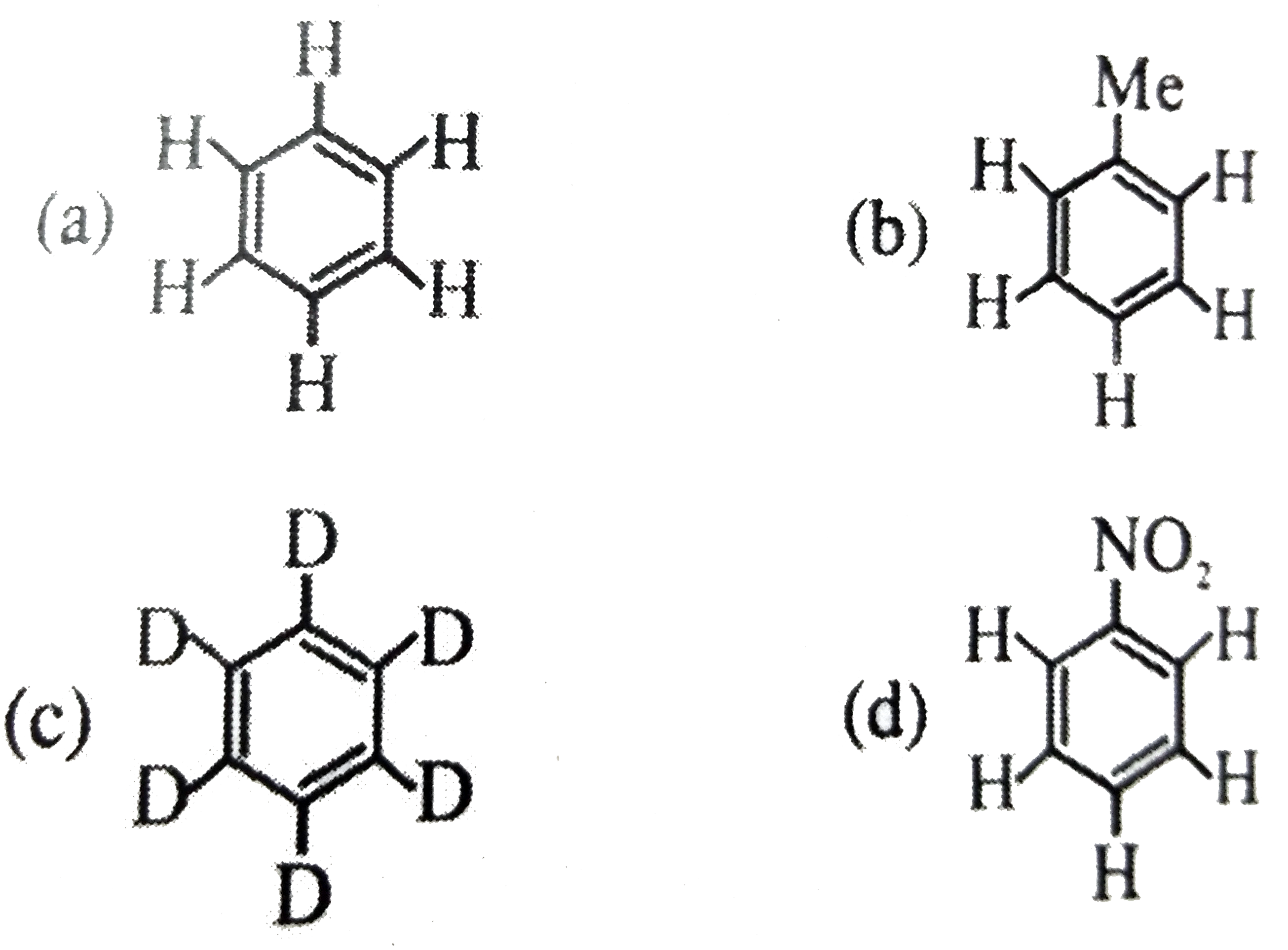Arrange the following in the order as mentioned :
−CN,−CI,−OH,−NO2 groups in the order of decreasing -l-effect,
To arrange the groups -CN, -CI, -OH, and -NO2 in the order of decreasing -I effect (inductive effect), we need to analyze the electron-withdrawing ability of each group based on the electronegativity of the atoms involved and their hybridization states.
1. Identify the Groups and Their Atoms:
- -CN (Cyanide): The carbon is directly attached to nitrogen.
- -CI (Chloride): The carbon is directly attached to chlorine.
- -OH (Hydroxyl): The carbon is directly attached to oxygen.
- -NO2 (Nitro): The nitrogen is directly attached to oxygen.
2. Determine Electronegativity:
- The electronegativity values of the relevant atoms are:
- Nitrogen (N) > Oxygen (O) > Chlorine (Cl) > Carbon (C).
- This means that nitrogen has the highest electronegativity, followed by oxygen, then chlorine.
3. Analyze Hybridization:
- The hybridization affects the electronegativity:
- In -NO2, nitrogen is sp2 hybridized, which increases its electronegativity.
- In -CN, carbon is sp hybridized, which also increases its electronegativity compared to sp3.
- In -OH, oxygen is sp3 hybridized.
- In -CI, chlorine is also sp3 hybridized.
4. Rank the Groups Based on -I Effect:
- -NO2: This group has the highest -I effect due to the high electronegativity of nitrogen and its sp2 hybridization.
- -CN: The cyanide group comes next because of the sp hybridization of carbon and the electronegativity of nitrogen.
- -Cl: Chlorine has a significant -I effect due to its electronegativity and the presence of vacant d-orbitals that can stabilize negative charge.
- -OH: The hydroxyl group has the least -I effect as oxygen is less effective in withdrawing electrons compared to the other groups.
5. Final Order:
- The final order of the groups in terms of decreasing -I effect is:
- -NO2 > -CN > -Cl > -OH
- -CN (Cyanide): The carbon is directly attached to nitrogen.
- -CI (Chloride): The carbon is directly attached to chlorine.
- -OH (Hydroxyl): The carbon is directly attached to oxygen.
- -NO2 (Nitro): The nitrogen is directly attached to oxygen.
- The electronegativity values of the relevant atoms are:
- Nitrogen (N) > Oxygen (O) > Chlorine (Cl) > Carbon (C).
- This means that nitrogen has the highest electronegativity, followed by oxygen, then chlorine.
- The hybridization affects the electronegativity:
- In -NO2, nitrogen is sp2 hybridized, which increases its electronegativity.
- In -CN, carbon is sp hybridized, which also increases its electronegativity compared to sp3.
- In -OH, oxygen is sp3 hybridized.
- In -CI, chlorine is also sp3 hybridized.
- -NO2: This group has the highest -I effect due to the high electronegativity of nitrogen and its sp2 hybridization.
- -CN: The cyanide group comes next because of the sp hybridization of carbon and the electronegativity of nitrogen.
- -Cl: Chlorine has a significant -I effect due to its electronegativity and the presence of vacant d-orbitals that can stabilize negative charge.
- -OH: The hydroxyl group has the least -I effect as oxygen is less effective in withdrawing electrons compared to the other groups.
- The final order of the groups in terms of decreasing -I effect is:
- -NO2 > -CN > -Cl > -OH
Topper's Solved these Questions
- ORGANIC CHEMISTRY : SOME BASIC PRINCIPLES AND TECHNIQUES BOOK - ICSECHAPTER - ORGANIC CHEMISTRY : SOME BASIC PRINCIPLES AND TECHNIQUES EXERCISE - VERY SHORT ANSWER TYPE QUESTIONS
87 Videos
- ORGANIC CHEMISTRY : SOME BASIC PRINCIPLES AND TECHNIQUES BOOK - ICSECHAPTER - ORGANIC CHEMISTRY : SOME BASIC PRINCIPLES AND TECHNIQUES EXERCISE - SHORT ANSWER TYPE QUESTIONS
110 Videos
- ORGANIC CHEMISTRY : SOME BASIC PRINCIPLES AND TECHNIQUES BOOK - ICSECHAPTER - ORGANIC CHEMISTRY : SOME BASIC PRINCIPLES AND TECHNIQUES EXERCISE - NCERT TEXT-BOOK EXERCISES (WITH HINTS AND SOLUTIONS )
72 Videos
- HYDROGENBOOK - ICSECHAPTER - HYDROGENEXERCISE - NCERT TEXT-BOOK EXERCISE (With Hints and Solutions)
53 Videos
- REDOX REACTIONS (OXIDATION AND REDUCTION)BOOK - ICSECHAPTER - REDOX REACTIONS (OXIDATION AND REDUCTION)EXERCISE - NCERT TEXT-BOOK. EXERCISES ((With Hints and Solutions)
69 Videos
Similar Questions
Knowledge Check
Arrange the following in decreasing order of E2 reaction :
 AX>Y>ZBX>Z>YCZ>X>YDY>X>Z
AX>Y>ZBX>Z>YCZ>X>YDY>X>ZArrange the following in decreasing order of E2 reaction :
 AX>Y>ZBX>Z>YCY>Z>XDZ>Y>X
AX>Y>ZBX>Z>YCY>Z>XDZ>Y>XArrange the following in decreasing order of dipole moment <
ABF3<H2S<H2OBH2S<BF3<H2OCH2O<H2S<BF3DBF3<H2O<H2S
Arrange the following in decreasing order of acidity

View SolutionArrange the following in decreasing order of stability

View SolutionArrange the following in decreasing order of stability

View SolutionArrange the following in decreasing order of rate of nitration :-

View SolutionArrange the following in decreasing order of acidic nature of

View Solution
